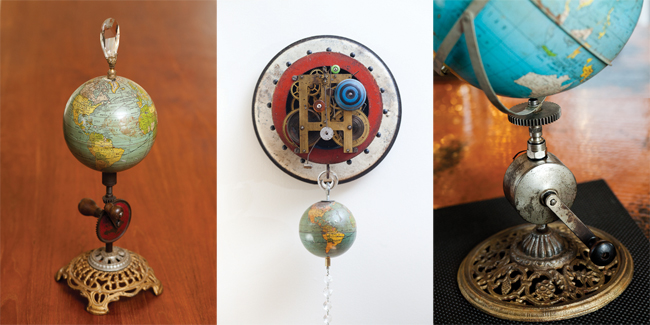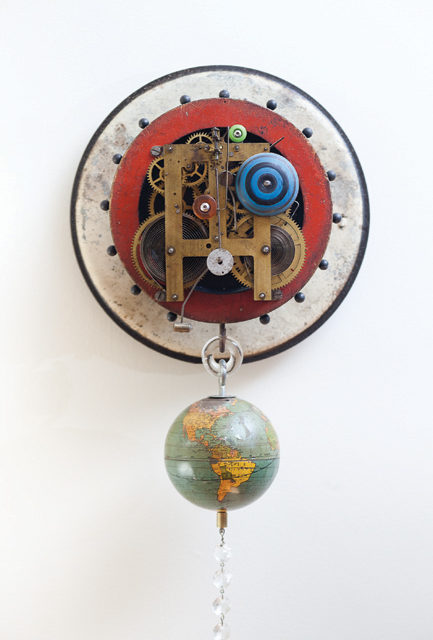
(l-r) A wooden case, with vintage globe, pencil sharpener, ice pick handle, and brass push plate. A small vintage globe, clock mechanism, lamp prisms, gear mold, glass insulator, and birdcage tray. A lamp base and parts, vintage crank drill (deconstructed), metal globe, and glass finial. Photos by Shannon Zahnle
BY CARMEN SIERING
We live in a disposable society, which is a fortunate thing for local artist Brad Fugate, who depends on found objects in the creation of his art. Reminiscent of the steampunk aesthetic, Fugate’s works, including several pieces featuring vintage globes, contain lots of wood and metal parts — things that normally would not go together, but do. And it’s not the kind of art that one shouldn’t touch. The springs, coils, gears, and cranks cry out for the observer to be hands-on and make the parts move. From formal, framed works to what Fugate calls a “whimsical, bouncing, strange little solar system,” each piece has parts that move in some way. “People really enjoy the interactivity of it,” he says.
Fugate earned a B.F.A. from the University of Missouri and worked mostly as a painter and printmaker until recently. “My work evolved from flat, to flat with space in it, to freestanding,” he says. “Then I started looking at parts that were interestingly beautiful in their own right, parts that moved, and I sort of meandered toward sculpture.”
“The use of the globe is to provide a visual metaphor for the planet we live on,” Fugate explains. “The constructions are, quite simply, abstracted alternative solar systems.”
Although he doesn’t actively market his globe art, several pieces are on display at Relish, the “urban marketplace” he owns with his wife Sharon. And he’ll be making more, when the right parts come along. “Some of these I’ve been working on for a couple of years, off and on,” he says, gesturing to several works in progress. “You let it sit, and then one day you buy a box of parts and find the perfect piece.”
















